Galleries
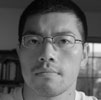
Bin Danh
Bio: Binh Danh received his MFA from Stanford University in 2004 and has emerged as an artist of national importance with work that investigates his Vietnamese heritage and our collective memory of war, both in Viet Nam and Cambodia—work that, in his own words, deals with "mortality, memory, history, landscape, justice, evidence, and spirituality." His technique incorporates his invention of the chlorophyll printing process, in which photographic images appear embedded in leaves through the action of photosynthesis. His newer body of work focuses on the Daguerreotype process. For more information see: binhdanh.comStatement: I explore history, mortality, and memory by printing images onto leaves, and also by re-contextualizing cultural artifacts, thereby reflecting on our shared humanity. My current work explores the daguerreotype process and the relationship to the American landscape.

Brian Ulrich
Bio: Brian Ulrich was born 1971 in Northport, NY. Ulrich earned his MFA in photography at Columbia College Chicago and a BFA in photography at the University of Akron. An internship at the Akron Art Museum further fueled his research and knowledge of the history of the medium. He later spent considerable time working at the Howard Greenberg Gallery in New York and then the Cleveland Museum of Art. Since finishing his graduate studies in 2004, Ulrich has had solo exhibitions at the Museum of Contemporary Art, Chicago; the Nerman Museum of Contemporary Art, Kansas City; the Museum of Contemporary Art, San Diego; the Rhona Hoffman Gallery, Chicago; the Julie Saul Gallery, New York; and the Robert Koch Gallery, San Francisco. He has also been featured in many group exhibitions. For more information see: notifbutwhen.comStatement: Dark Stores, Ghost Boxes and Dead Malls is an extension of my long-term work documenting American consumer culture since the turn of the century. “Dark stores,” “ghost boxes,” and “dead malls” are retail industry terms for emptied, vacant, and dying retail stores, big-box stores, and malls. With the recent financial decline, the latent economic model of the twentieth century is revealing much of its effects on communities, the environment, and the American landscape. By photographing the hulking remnants of a consumer world now since abandoned and stripped of its signification of brands, promised illusions, and advertisements, the futility of a retail-based economy lays bare in the empty malls and retail stores that represent reminders of consumption without foresight.

Dan Burkholder
Bio: Dan Burkholder was one of the first photographic artists to embrace digital technology in the early 1990s. His personal journey from photography’s chemo-mechanical era to one of pixels and computers has always been inclusive, as he strives for new and exciting ways to blend the best of what the medium presents. His workshops, books, and articles have inspired creative photographers all over the world. His most recent fine art photography starts with iPhone camera images that come to life as handmade platinum-palladium over gold-leaf prints. Most importantly, he can’t wait to see what happens next in the world of photography.Burkholder earned his BA and Master’s degrees from Brooks Institute of Photography and lives with his wife, Jill, and their four cats and one dog at the base of the Catskill Mountains in Palenville, New York. For more information see: danburkholder.com and iphoneartistry.com
WARNING: the gallery below contains some nude images.

Evan Baden
Bio: Evan Baden was born in Saudi Arabia in 1985. He graduated with a BFA in photography in 2007. His photographs have been exhibited in the United States, Canada, and Europe, and added to the collections of the Walker Art Center in Minneapolis, the Milwaukee Art Museum, and the Museum of Contemporary Photography in Chicago. In 2008 he was awarded the Jerome Fellowship for Emerging Artists. He has been a finalist for the McKnight Fellowship for Photography and nominated for the Baum Award for Emerging American Photographers. Recent publications include The Guardian, FOAM, Le Monde, La Repubblica's D, Geo, Die ZEIT, and Die Suddeutsche Zietung's WISSEN. For more information see: evanbaden.comStatement: Technically Intimate
Young people have become accustomed to posting and sending sexually charged images of themselves via the Internet and cell phones. These images range from simple, innocent portraits, to nudes, to pornographic images that are extremely explicit. Many times they end up posted somewhere on the Internet. I am using found images from the Internet as source material. These are images that have been created by one person with the intention of sharing them privately with another person. However, through some event, these images have ended up on the Internet. Instead of recreating the actual found image, I am recreating the moment that the original found image was captured. I am attempting to put the original image into a context. In the found images it is the act of creating the image that is important because the “act,” not the “image,” represents the shift in how young people understand, enact, and experience sex and intimacy. The acts that are performed in these images and videos are acts that to many of an older generation would be private. Instead, these once private acts are now being viewed by millions.
The Illuminati
From our earliest memories, there has always been a way to connect with others, whether it is Myspace, Facebook, cellphones, e-mail, or instant messenger. And now, with the Internet, instant messaging, and e-mail in our pocket, right there with our phones, we can always feel as if we are part of a greater whole. These devices grace us with the ability to instantly connect to others, and at the same time, they isolate us from those with whom we are connected. They allow for great freedom, yet so often, we are chained to them. They have become part of who we are and how we identify ourselves. These devices ordain us with a wealth of knowledge and communication that would have been unbelievable a generation ago. As this generation moves forward, not only do they use these new pieces of technology natively, but they being to integrate themselves into the technology, and in turn, the technology begins to shape their lives.
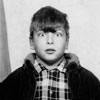
Fredrik Marsh
Bio: Fredrik Marsh lives and works in Columbus, Ohio. He attended the Ohio State University, earning a BFA in photography in 1980 and an MFA in printmaking in 1984. He has been teaching photography at universities since 1985.Marsh has been exhibiting his photographs since 1978 and has been awarded a number of individual artist residencies, project grants, and fellowships. In 2008, he received a John Simon Guggenheim Memorial Foundation Fellowship in Photography. Marsh's photographs are in collections across the United States and abroad, including the George Eastman House in Rochester, NY; Kupferstich-Kabinett in Dresden; LACMA; MoCP at Columbia College in Chicago; and Stiftung Moritzburg Kunstmuseum in Halle, Germany; among others. For more information see: fredrikmarsh.com.
Statement: During a three-month artist residency in Dresden, Germany, in 2002, and over the next four subsequent summers, I explored the city and its outskirts, finding myself increasingly drawn towards photographing empty structures overlooked in the rebuilding, reconstruction, and renewal process still underway. Encountered during these many extended walks throughout the now familiar city, my efforts concentrated on photographing the detritus of human culture discovered in the decaying interior spaces of vacant factories, abandoned apartments, and hotel rooms. The Dresden Project demonstrates the juxtapositions and ironies still abundant in the post-Socialist world, showing the old and the new as well as the grandeur and the decay of these once-majestic buildings. Contrasted with panoramic photographs of both sweeping grandness and of industry in decline—the Baroque to the Postmodern—the later work concentrates on interiors made first in black and white, then exclusively in color as represented by these selections. Not focusing on people directly, but upon their artifacts, on structures and objects bearing their imprint, the photographs I created within these vacant, unassuming factory and apartment building interiors transcend the intimate traces of unknown inhabitants whose individual work and lives were subject to a broken system of regiment and surveillance.
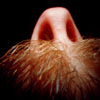
Justin Quinnell
Bio: Justin Quinnell is a freelance pinhole photographer and part-time lecturer from Bristol in the United Kingdom. He did a degree in fine art photography and discovered pinhole photography 20 years ago.After many employment soirees including head of a photography department, coordinating the National Cycle Network, to managing a safari camp in Kenya, he currently lectures at universities around the UK and is artist in residence at Knowle West Media Centre, having distributed 450 solargraph cameras to the community.
He has two books published and was the “pinhole photography consultant” for the Rian Johnson movie The Brothers Bloom. He has two small but perfectly formed children and a larger (but also perfectly formed) wife. For more information see: pinholephotography.org.
Statement: I started holing in the early 90s. Many of my students couldn’t afford cameras, but daily drank several cans of fizz. We made cameras out of the cans, and I soon realized that pinhole photography had a huge untapped potential and began building cameras and celebrating the "accidents" that occurred. I use many cameras; one (the Smileycam) is made from a 110-film cartridge and fits in my mouth! I also use a giant trash can (next doors), which doesn’t!
Today the pinhole has met with the digital age, creating even greater potential within ever-evolving conventions. Joy can be gained from cameras made from beer cans and costing $8,000 less than a Nikon D3X!
What next? As ever with pinhole I have more ideas than time, but look forward to the day when I can sit with my kids in a blacked-out room, peel off a shutter covering a small hole, and look in wonder at the image-forming properties of a small hole.
Let us hope the magic will continue for thousands of years, as long as light travels in a straight line and there are people with time to wonder.

Liz Hickok
Bio: Liz Hickok is a San Francisco–based artist working in photography, video, sculpture, installation, and currently, Jell-O. Hickok received her MFA from Mills College in Oakland, California. She earned a BFA and BA from the School of the Museum of Fine Arts and Tufts University in Boston, Massachusetts. Hickok lived and worked in Boston for over ten years before moving to the San Francisco Bay Area. Hickok’s San Francisco in Jell-O series has become a popular subject of media coverage, by The New York Times, NPR, and The CBS Early Show, among others, and her artwork has been exhibited across the country and is included in international collections. For more information see: lizhickok.com.Statement: Fugitive Topography: Cityscapes in Jell-O®
I cast elaborate scale models of urban sites out of Jell-O, light them from below, and bring them to life with photography and video. The molded shapes of the city blur into a jewel-like mosaic of luminous color and volume. Remade in an unexpected material, the seemingly permanent architectural structures of our cities are transformed into something precarious and ephemeral. Their fragility quickly becomes a metaphor for the transitory nature of human artifacts. I drew the inspiration for the project from my immediate surroundings—San Francisco, where the geological uncertainties of the landscape evoke uncanny parallels with the gelatinous material. I have since been inspired by other urban and suburban sites with metaphorical possibilities, including the White House and Las Vegas. I construct my own vision of these locations with props and backdrops as if they were small movie sets. The photographs I take capture imaginary landscapes, while the videos illustrate the power of nature’s destruction. I also create site-specific Jell-O installations that introduce the viewer to a more physical experience than the photographs—involving smell, movement, and the desire to taste. Because the sculptures eventually decay over time, the photographs and videos remain as the only record of their existence.
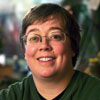
Lori Nix
Bio: Lori Nix was born in Norton, Kansas. She earned her MFA in photography from Ohio University and her BFA in photography and ceramics from Truman State University. Her work has been shown nationally with exhibitions by the ClampArt Gallery, New York; Jenkins Johnson Gallery, New York; George Eastman House, Rochester, NY; G. Gibson Gallery, Seattle; Miller Block Gallery, Boston; California Museum of Photography, Riverside; and Stephen Cohen Gallery, Los Angeles. She has been awarded grants by the New York Foundation for the Arts and the Ohio Arts Council. Lori lives and works in Brooklyn, New York. For more information see: lorinix.netStatement: Lori Nix’s photographs, saturated with color and infused with a dark sense of humor, turn the notion of the traditional landscape on its head. Painstakingly created in miniature, her constructed scenes depict a detailed world where all is not as it seems. Public spaces dedicated to history and science (and a few intimate spaces) lie deteriorating and neglected while nature slowly takes them back. In her latest series, "The City," as well as her previous works, Nix emotes the clash between catastrophe and beauty to depict their codependence. She gives the viewer an incidental advantage by offering fenced-in tragedies that inherently raise awareness and inspire reflection on our everyday actions and means of survival.
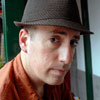
Matt Siber
Bio: Born in Chicago in 1972, Matt Siber grew up in the Boston area. He holds a Bachelor’s degree in history and geography from the University of Vermont (1994), and an MFA in photography from Columbia College Chicago (2003). He has a background in commercial photography but is now primarily a gallery artist. His artwork is part of many private and public permanent collections, including the Art Institute of Chicago and the Museum of Contemporary Photography, Chicago. He is represented by Galeria Antoni Pinyol in Reus, Spain; Galeria La Fabrica in Madrid; Galerie Ysabel Pinyol in Barcelona; and Galerie f 5,6 in Munich. His images have been published internationally in such publications as Artforum, Flash Art, Aperture, and EXIT Magazine, and he has received grants from the Aaron Siskind Foundation and the Illinois Arts Council. Siber also teaches advanced digital imaging at Columbia College Chicago. For more information see: siberart.comStatement: Through the media of photography, digital imaging, video, and graphics, I create works that address issues involving popular media, culture, and mass communication. I am particularly concerned with power and control on a large scale, where forces of persuasion and influence are exerted between large groups of people through advertising, news agencies, corporate branding, and government propaganda. My work is an effort to create awareness of these influences with the hope of counteracting the hegemony of a money-driven, consumer culture.
As a result of this interest, much of my work addresses the nature of communication, both visual and literary. I am intensely interested in the ways in which we communicate as a culture, particularly in terms of text, image, and graphics as they are presented in public and semi-public space.

Phil Bergerson
Bio: Phil Bergerson has photographed and exhibited internationally for over 30 years. His work is in many prestigious collections, including the National Gallery of Canada in Ottawa, the Bibliotheque Nationale in Paris, and the Canadian Museum of Contemporary Photography in Ottawa. His photographs have been published in The New Yorker, The New York Times, and Walrus Magazines. His book Shards of America was published in September 2004. Now professor emeritus, Bergerson was a professor at Ryerson University from 1975 to 2006, where he established and organized the prestigious annual international "Kodak Lecture Series," as well as a National Conference on Photography in Canada, and the first International Symposium on Photographic Theory. For more information see: philbergerson.comStatement: By turns absurd, humorous, painful, and poignant, this project is a rich and tumbling index of cultural expression as seen in the architecture, the streets, and the signage of small towns across North America.
A shard is a fragment of broken pottery, often used by archaeologists to reconstruct objects from past civilizations. In Shards of America, Canadian photographer Phil Bergerson has gathered richly detailed images from neglected corners of America’s towns and small cities, and created a fascinating mosaic.
Businesses, religious sects, and community groups announce their presence, offer their services, and pitch their messages, while commercial signs, graffiti, posters, and public notices blanket the surfaces of buildings and public spaces. Paintings and movie posters, dime-store novels and daily newspapers, figurines and mannequins, decals and stenciled graffiti, and children’s letters and drawings are laid out as artifacts of a greater whole.
Patriotism, consumerism, censorship, and nostalgia for a simpler past coupled with a desire for a less complicated present—touching on all these themes, Bergerson’s quietly ironic but empathetic tone encourages the reader to imagine how our own ordinary world might appear to viewers in a hundred or more years’ time.
Ted Orland
Bio: Ted Orland lives in Santa Cruz, California, where he pursues parallel careers in photography, teaching, and writing. He is co-author (with David Bayles) of Art and Fear, and author of its recent companion volume, The View from the Studio Door. (He also created the classic “Photographic Truths” poster.) Orlan teaches digital photography at a local community college, and leads workshops nationally on a variety of artistic issues. His photography is represented by the Ansel Adams Gallery. For more information see: tedorland.com
Statement: The world strikes me as a quirky but basically benign place. And more often than not, the elements of that world that catch my eye are those I encounter almost accidentally, often fleetingly, sometimes just out of the corner of my eye while whizzing down the freeway. That's fine with me—I carry my camera with me most everywhere and simply photograph whatever crosses my path. Admittedly it’s sort of a “shoot first, ask questions later” approach, but it works for me. Basically I live my life, and art comes along for the ride. My theory is that if you lead an interesting life, you’ll make interesting art. How could it be otherwise?

Thomas Kellner
Bio: Thomas Kellner was born in Bonn, Germany in 1966, and studied art, sociology, politics, and economy at the University of Siegen, Germany. Kodak Germany awarded him the Young Professionals Prize, at which time he decided on a life in art and photography. Since 1997 Kellner has been living and working as a visual artist in Siegen. In 2003 and 2004, he was a visiting professor of fine art photography at the University of Giessen. In 2003, he received the call for membership to the German Association for Photography (DGPh). In 2009, Kellner received the Fine Art Award from the district of Düren, Germany, and the Award of Excellence from Pingyao, China. Since 2005, he has been regularly invited as an expert to photography meeting places around the world, such as the festivals in Brasilia, Houston, or Beijing. For more information see: www.thomaskellner.comStatement: After a project on the German border, Thomas Kellner started working on European monuments in 1997, using the contact sheet method and "deconstructing architecture as a visual language." Kellner records the architectural monuments with his camera in a way analogous to the natural process of seeing. The series of single shots thus created from a slightly slanted perspective are subsequently constructed into a new picture.
With subversive irony Kellner’s architectural photographs do not appear as the postcardesque pictures of iconic monuments we carry in our minds, nor can they be seen as images documenting these monuments’ perfect form. His buildings do not appear consolidated, but rather deconstructed into multiple fragments and reconstructed to assume an entirely new form. However, the ostensible interpretation of Kellner’s work as being cubistic-fragmentarian montages is too narrow. In fact, his art explores the history of the photography genre in a media-reflective way. Its essence lies within the fact that his large-scale color photographs are contact sheets composed of consecutively assembled filmstrips of a single shooting session.
Since 2003 Kellner has been working on all kinds of architecture all over the world. In his oeuvre you can find buildings, monuments, and interiors from Brazil, Mexico, the USA, China, Italy, Germany, Great Britain, etc. And all of them seem to be broken apart, dancing, and remind us of the vulnerability of our values and creations. Recent important projects include Monumente, Ozymandias, Tango Metropolis, Dancing Walls, and All shook up.
In 2010 the German artist finished two more projects: a picture compilation of the Zeche Zollverein, and his project Brasilia, the architecture of Oscar Niemeyer—a modern utopia.

Toni Hafkenscheid
Bio: Toni Hafkenscheid is a Toronto-based photographer who was born in the Netherlands. After graduating from the Rietveld Academy in Amsterdam in 1989, he moved to Toronto, Canada. During the following six years he was active in the arts community in Toronto and received several awards. In 1996 Toni moved back to Amsterdam to pursue a career as a commercial photographer. In 2002 Toni moved back to Toronto. He is represented in Canada by Birch Libralato in Toronto and Gallery Jones in Vancouver, and in the United States by Packer Schopf in Chicago, Marcia Wood in Atlanta, and George Billis in Los Angeles. For more information see: thphotos.comStatement: The most fascinating aspect of photography for me is the fact that it so closely resembles reality. In my work I like to explore what constitutes fact and fiction in a photograph by trying to blur the limits between reality and fiction. Although the enclosed photographs represent an actual place, the way I photograph them makes these landscapes look like model train sets.
On a summer trip to British Columbia, Canada, a few years ago, it struck me how bizarre and almost fake the landscape in B.C. looked. It reminded me of the model train set that I used to play with when I was a kid. The train tracks were set in an artificial landscape of fake cotton wool trees, plastic buildings, and cardboard mountains. In this series of photographs I try to play with the illusion of real and fake in the landscape by utilizing a shallow depth of field to make some parts of the image soft and others in focus. The colors in the photographs are tweaked to look like old postcards and to recall a certain American dream, an idealized view of an immediate future typical of the 1950s.
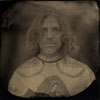
Wayne Martin Belger
Bio: Wayne Martin Belger’s work as been shown in select solo shows at Strychnin Gallery, Berlin in 2011; Meta Gallery, Toronto in April 2010; Billy Shire Fine Art, Culver City, California, in March 2006; Etherton Gallery, Tucson, Arizona, in January 2005 (with Joel-Peter Witkin); and Todd Hughs Fine Art, Pasadena in December 2001.Belger’s select publications include a 10-page feature in Popular Mechanics (Russia), October 2009; work featured in Photographic Possibilities, a textbook; a feature story in Top Class Magazine (Czech Republic), April 2009; a 2-page feature story in Arena Magazine (Turkey), January 2009; a 6-page feature in B&W Magazine #53, 2007; a 10- page feature in Juxtapoz Magazine, November 2006; a feature in Elle Décor, September 2005; and the Los Angeles Times Magazine, November 24, 2002. For more information see: www.boyofblue.com
Statement: The tools I create and work with are pinhole cameras. With pinhole photography, the same air that touches my subject can pass through the pinhole and touch the photo emulsion. There are no barriers between the two. No lenses changing and manipulating light. With pinhole what you get is an unmanipulated, true representation of a segment of light and time. The creation of a camera comes from my desire to relate to a subject. When I choose a subject I spend time studying it. Then I start visualizing how I would like a photo of the subject to look. When that’s figured out, I start on the camera stage of the project by collecting parts, artifacts, and relics that relate to the subject. When I’ve gathered enough parts and feel for the subject, I start the construction of the camera. I create the cameras from Aluminum, Titanium, Tungsten, Copper, Brass, Bronze, Steel, Silver, Gold, Glass, Horn, Bone, Human Skulls, Human Organs, HIV+ Blood, and relics—all designed to be the sacred bridge of a communion offering between myself and the subject. All to witness and be a tool of creation and decay presented by the author with light and time.